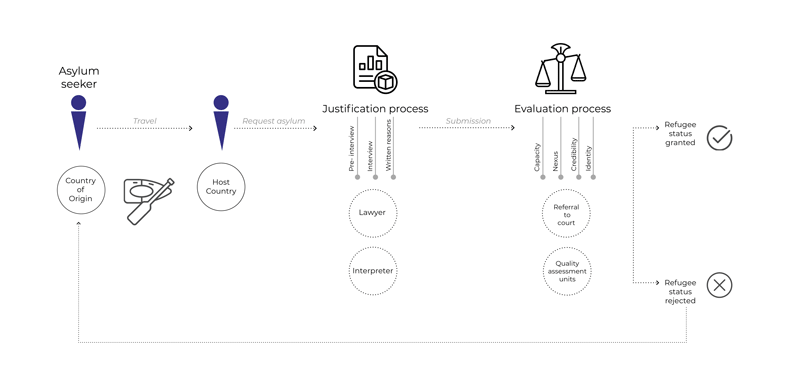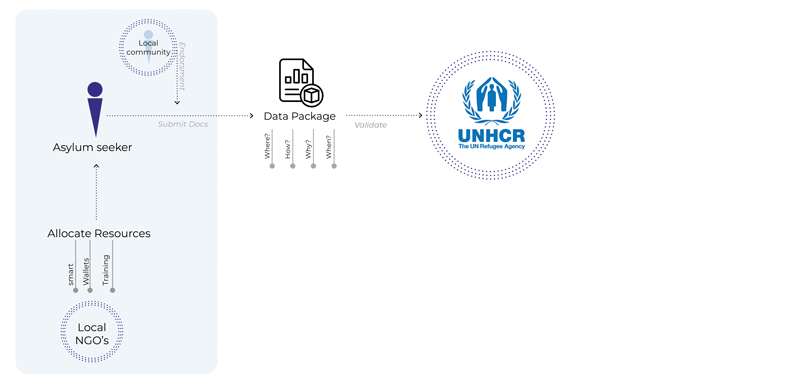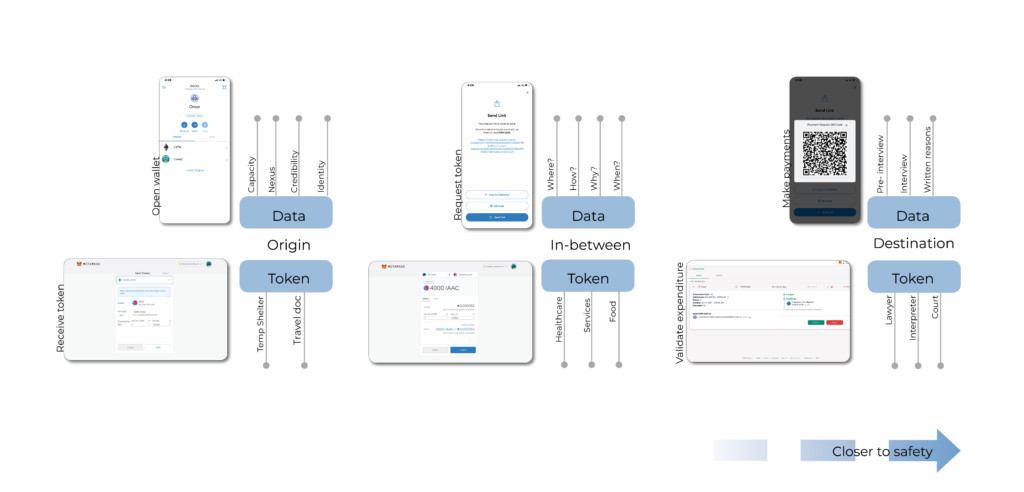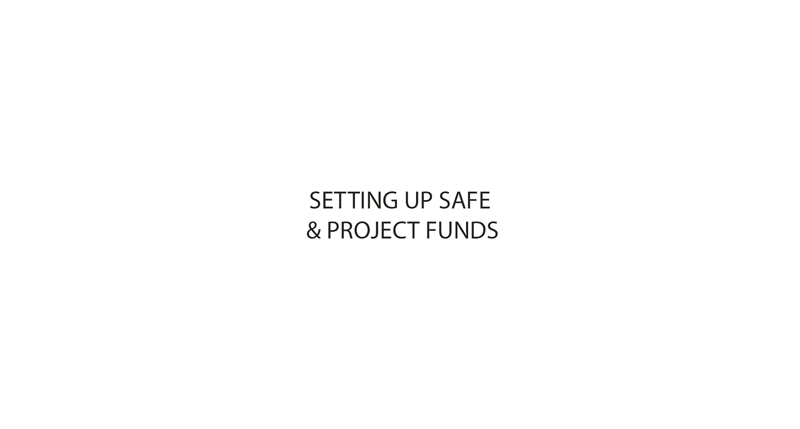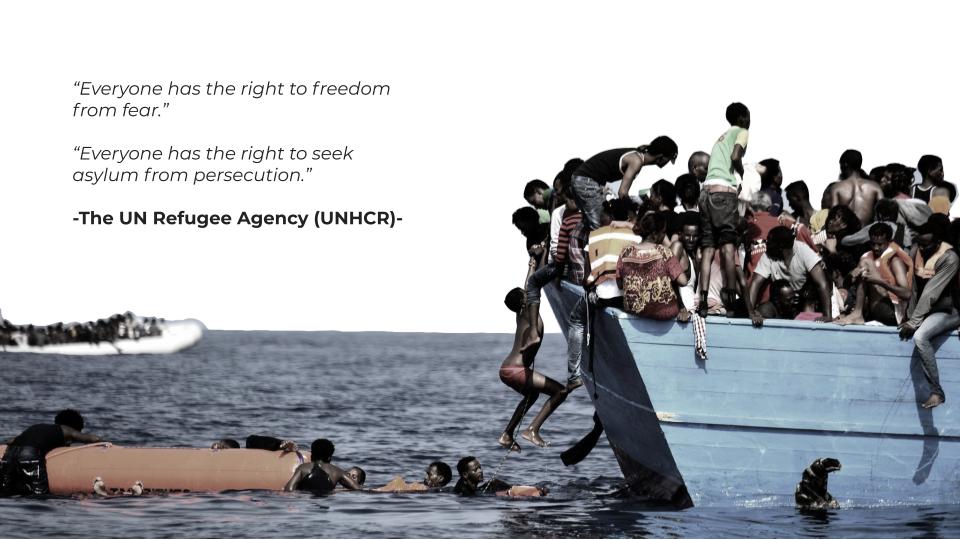According to the United Nations, 80 million people are currently displaced and every year around one million people seek asylum. During mass movements of refugees, usually as a result of conflict or violence, it becomes extremely difficult to control borders and allocate resources to cater to the needs of those seeking protection.
Selecting the cause
‘Flee’ is a project that uses blockchain technology to enable the re-allocation of urban resources needed for asylum seekers who are facing dangerous situations. The aim of the project is to prevent the exploitation of migrants by criminal networks in order to increase safety and provide support for Asylum seekers. By using blockchain it opens the grounds for greater transparency, enhanced security, improved traceability and increased efficiency of the process.
Current model
The current process of asylum application deals mainly with the steps after the person is on safe grounds and can start the application process. In the current model of the city the process works through a structured ‘Asylum Systems Quality Assurance and Evaluation Mechanism’ where the asylee goes through 3 stages of pre-interview, interview and documentation at assessment units located in the host country. This model currently is very time consuming given the fact that asylum seekers sometimes wait for years until before getting legalized, the current system doesn’t account for this, nor does it tackle some of the difficulties asylum seekers face before reaching the host country. Hence, to this day, an estimated 8,000 people die yearly in the attempt of fleeing their country.
Designing the cause
‘Flee’ opens a platform that tackles the pre-departure process allowing for more efficiency and transparency by bridging the gap between the asylum seekers with the global network of UNHCR and NGOs at different destinations.
Implementing the cause
For a person who is facing prosecution, prosecution or discrimination and is unable to return to their homes they can go through the following steps in order to ensure their safe departure.
Origin:
- Approaches one of the centers for asylum seekers- legal personnel who can help transport refugees to safety.
- Opens a personal wallet with the validated
- Asylum seeker uploads the requirement- The data package – where, when, how- and has full transparency and access to their documents
- Someone from their community is provided as a reference and can endorsed the person and validate the submitted documents
In Between
- The data package is received and validated by a personnel at UNHCR
- The safe will create the infrastructure to receive data, deploy tokens and validate spenditure.
- Sends the Travel package to wallet
- The tokens include basic needs of health, food, shelter, and are validated by the safe.
- They can use the travel token to use the provided transport to travel to their destination.
Destination
- Asylee reaches the destination
- validate arrival – deploy tokens .
- Armed with his or her unique wallet, the individual can now access to services at the host country
- rather than belonging to a single institution, these ledgers belong to all the users connected to them. Users’ identities within a ledger are encrypted and therefore known only to the users themselves. Establishes trust between
- independent parties and allows those parties to share trusted information
- Asylee can start the application process to have a fully recognized and legalized status
Behind the process:
Policies:
- Easing the pressure of the UNHCR in receiving and validating asylums
- Bringing together the NGO’s on both ends of the site
- Assisting States and partners to meet asylum and migration-management challenges in a manner that is sensitive to protection concerns
Governing the cause
‘Flee’ offers a platform for self-sufficiency, empowering, Managing, self-governance and will offer many benefits for both the asylum seeker and the UNHCR

For the Asylee:
- Disrupt the business model of criminal organizations that put migrants’ lives at risk and threaten our societies’ security, while avoiding risks of criminalizing those who provide assistance to migrants in distress
- Provide finances to people under Temporary Protected Status
- By capturing this data, Blockchain could enable each asylee to have a comprehensive financial history as they journey across borders as well as being able to use the history to enhance their quality of life in the host country.
For Cities:
- Access to a broader network of facilities through an alliance that brings together other NGOs already on blockchain- for example, the World Food Program (WFP).
- ‘Temporary status’ population leads cities to also invest in shareable infrastructure such as shared mobility, shared spaces and resources.
- Flexibility in deploying support structures such as clinics, shelters, schools and allocating existing infrastructure in time to provide maximum support.
Flee is a project of IAAC, Institute for Advanced Architecture of Catalonia developed at Master in City & Technology in 2020/21 by students: Aishath Nadh ha Naseer & Hebah Qatanany and faculty: Maria-Luisa Marsal Llacuna


